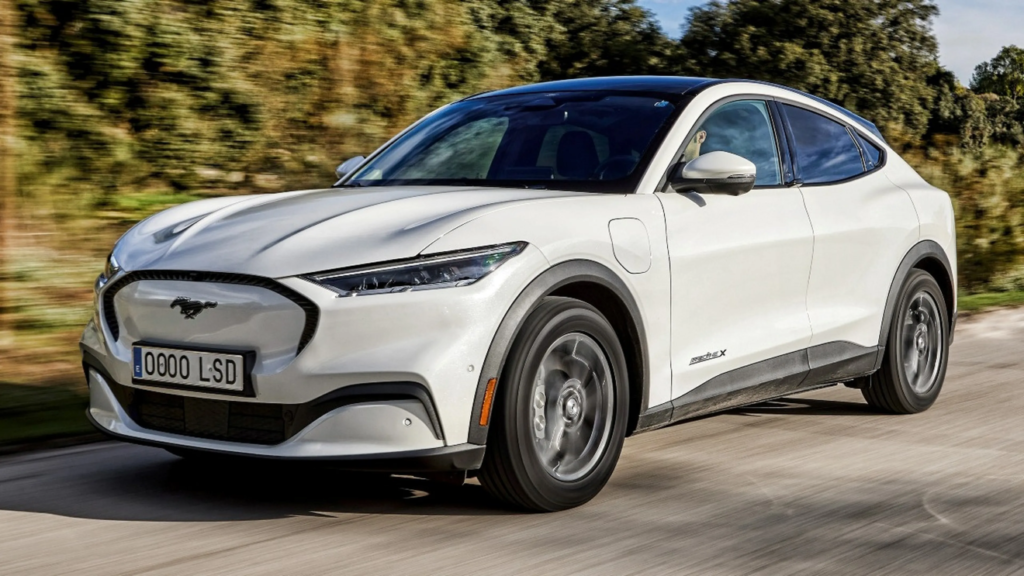“We are not seeing any competitor close to achieving the implementation of this technology,” declares Ford Spain regarding its new autonomous vehicle.
Antonio Chicote, Communications Manager of the company, reveals to Mobility Portal España the details of its first and only model approved for autonomous driving in the national market.
Since the early 2000s, the company has been exploring autonomous driving systems with the aim of improving safety and comfort in its cars.
The first prototype to incorporate this technology was the Ford F-250 Super Duty, which was equipped with speed and steering control systems.
Over the following years, the company continued to release prototypes and research this technology, announcing finally in 2017 its plan to launch its first fully autonomous vehicle in 2021.
The first markets to benefit from this technology were the British and German markets.
After obtaining approval from the Ministry of Industry, in collaboration with the General Directorate of Traffic (DGT), Spain became the third European country to adopt this innovation.
“Tests were carried out that covered more than 1 million kilometres, while in the United States, customers covered more than 170 million km, without registering a single incident,” assures Chicote.
It is an advanced level 2 autonomous driving technology.
Ford’s system, BlueCruise, allows hands-free driving on highways and motorways in Spain, in a designated “Blue Zone.”

This system is available on all Mustang Mach models and the 100 per cent electric Mustang, which have been on the market since mid-October 2023.
“Just as Henry Ford paved the way with the first mass-production model followed by other manufacturers, we like to be a benchmark for innovation in the industry,” emphasizes Chicote.
It is worth noting that Ford is the first brand to obtain approval from the Ministry of Industry and the DGT for this innovation to be used without a time limit.
Currently, it is possible to travel for six hours without the need to intervene with the pedals or the steering wheel.
Drivers don’t even have to worry about the speed, as the vehicle automatically adjusts to the maximum allowed limit on the road being travelled.
In November, the DGT revealed details about the roadmap to progress in this market during the presentation of the “Barometer on connected and autonomous vehicles,” presented by ANFAC, which was covered by this medium.
Specifically, Susana Gómez has anticipated details about the regulations that will govern the circulation and commissioning of level 4 and 5 cars.
The Deputy General Subdirector of the DGT has pointed out that they plan to publish the complete text shortly.
After its publication within the ordinary hearing and public information procedure, an ordinary processing process will continue.
“The desirable thing is for the Royal Decree to see the light in 2024,” she stated at the time.
Other countries, particularly China, are advancing rapidly in this technology.
Currently, the Asian country is heavily investing in the research and development of autonomous electric vehicles and has already implemented the use of driverless taxis.
Meanwhile, Spain is lagging behind in this field.
Despite this scenario, Ford plans to progressively incorporate this technology into other models.
“The rest of the manufacturers will also have to make the effort to offer consumers safer and more comfortable vehicles to drive,” says Chicote.
According to the company, customers quickly adapt to this technology, “experiencing a sense of security from the very beginning.”
To continue moving in this direction, the company maintains a close collaboration with the DGT, for whom this technology represents an advance in safety.
Both will continue working together to develop new technologies.
“I believe that regulators are receptive to evaluating this innovation, and we will gradually incorporate higher levels of automation,” confirms Chicote.
In addition to Ford, the autonomous lobby reaches the bus niche
One of the companies exploring this technology is Avanza, the main urban and metropolitan mobility operator in Spain.
The company is carrying out the Digizity project, co-financed by the EU’s Next Generation funds through the R&D of the PERTE.
This represents the largest European initiative focused on electric and connected vehicles, with the aim of automating, decarbonizing, and digitizing urban transport through the use of zero-emission buses.
Likewise, the Municipal Transport Company of Madrid (EMT Madrid) is working on the autonomous driving of its vehicles.
In collaboration with Alsa Grupo S.L.U., the company is implementing an autonomous car project at the Autonomous University of Madrid (UAM).
It is a vehicle that has been operating since 2020 within the campus on a 3.81kilometer route.
In this way, it is expected that in the coming years Spain will make significant progress in this technology.
Furthermore, it is estimated that by 2030, approximately 20 per cent of the vehicle fleet will have autonomy features.






